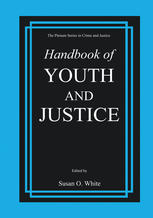

Most ebook files are in PDF format, so you can easily read them using various software such as Foxit Reader or directly on the Google Chrome browser.
Some ebook files are released by publishers in other formats such as .awz, .mobi, .epub, .fb2, etc. You may need to install specific software to read these formats on mobile/PC, such as Calibre.
Please read the tutorial at this link: https://ebookbell.com/faq
We offer FREE conversion to the popular formats you request; however, this may take some time. Therefore, right after payment, please email us, and we will try to provide the service as quickly as possible.
For some exceptional file formats or broken links (if any), please refrain from opening any disputes. Instead, email us first, and we will try to assist within a maximum of 6 hours.
EbookBell Team

0.0
0 reviewsWhen approached by Plenum to put together a volume of social science research on the topic of "youth and justice," I found the interdisciplinary challenge of such a project intriguing. Having spent 2 years as Director of the Law and Social Science Program at the National Science Foundation, I was well aware of the rich diversity of research that could fit within that topic. I also knew that excellent research on youth and justice was coming from different communities of researchers who often were isolated from each other in their respective disciplines as psychologists, sociologists, criminologists, or policy analysts. I saw this project as an opportunity to break down some of this isolation by introducing these researchers-and their work-to each other and to the broader community of social scientists interested in law and justice. There was another gap, or set of gaps, to be bridged as well. The juvenile justice system and the criminal justice system differ in significant ways, and the civil justice system, which is a major venue for issues of youth and justice, is yet another separate world. Few researchers are likely to know the whole picture. For example, a focus on juvenile justice often ignores the extent to which civil justice proceedings shape the lives of young people through divorce, custody, adoption, family preservation policies, and other actions (and vice versa).